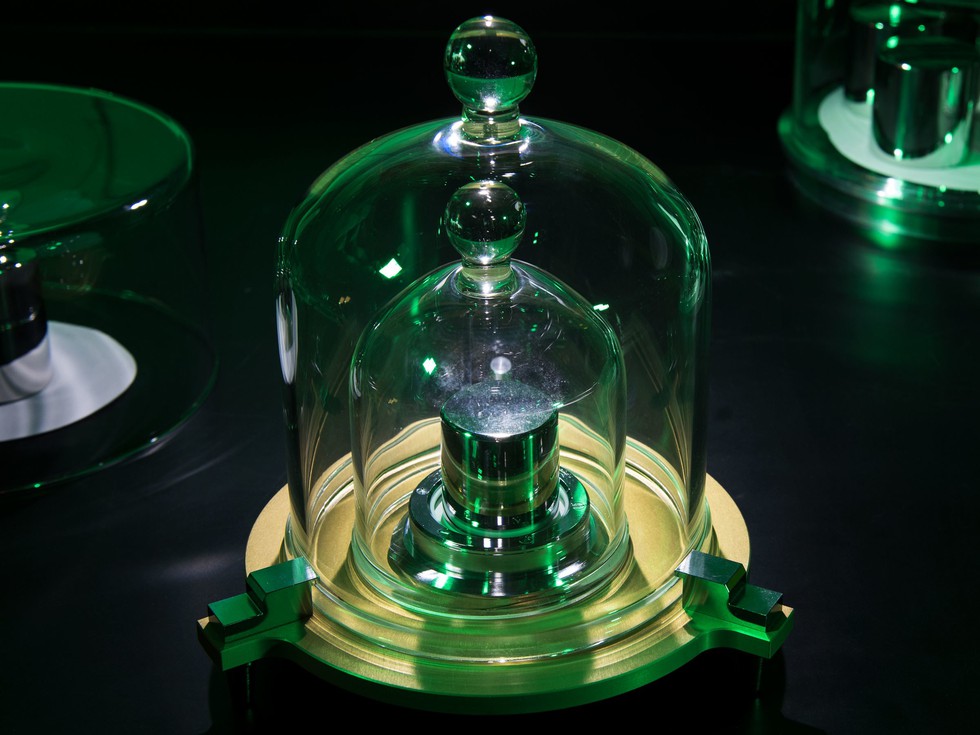Standardizing the standards:
- In the last 60 years, several standard units — the second, metre, ampere, Kelvin, mole, candela and, the kilogram — have all ceased to be defined by physical objects.
- One metre, for instance, was a platinum-iridium bar of that measure. In 1960, the metre was defined as the distance travelled by light in vacuum in 1/299,792,458 seconds.
- Reason: In essence, the units were freed from being defined on the basis of artefacts, as these being objects, were subject to wear and tear and sources of eventual error.
- The new artefacts, ought to derive from the constants of nature that are all interdependent. These include constants such as the Planck constant — the ratio of the electromagnetic radiation from a photon to its frequency — and the charge of an electron.
Kilogram:
- The photo of international prototype kilogram shows a cylinder of platinum and platinum-iridium alloy stored at the International Bureau of Weights and Measures (BIPM).
- It was formed in 1875 at the Convention of the Meter as the embodiment of the official weight of a kilogram.
- Within 10-15 years, about 40 copies were produced and distributed to the nation signatories of the Meter Convention.
- Although these are stored in filtered-air environments at a constant temperature and pressure, they have picked up tens of milligrams of contaminants each decade. Thus, the kilogram objects around the world no longer have exactly the same weight.
- These errors become magnified at both ends of the scale, leading to critical inaccuracies in descriptions of tiny objects and massive errors when measuring things at cosmic scales.
- That’s why in October 2017, in Paris, BIPM reviewed plans to overhaul the manner in which the standard values for the kilogram is calculated.
- Until this month, the kilogram was the only one among the units still pegged to a real object.
- After a formal vote in 2018, the kilogram has been redefined in terms of the Planck constant, the second and the metre.
